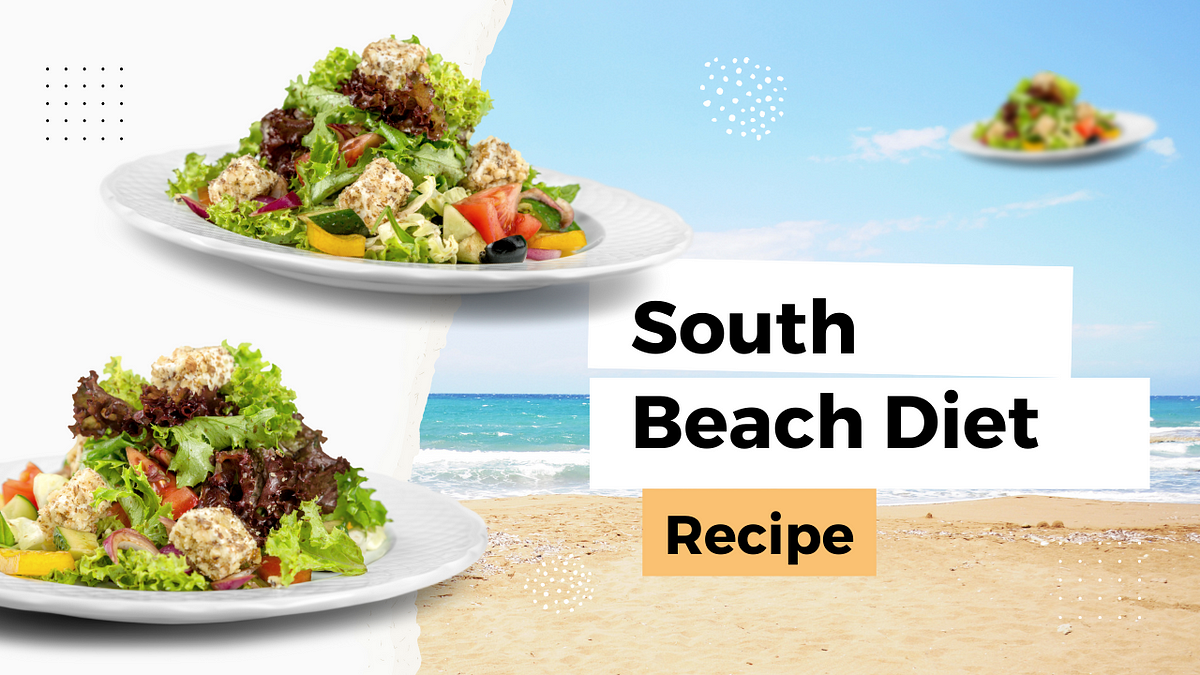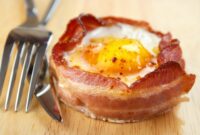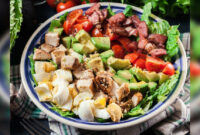South Beach Diet dinner recipes offer a delicious and satisfying way to enjoy healthy eating. This guide explores the principles of the South Beach Diet, focusing on dinner meal planning and providing practical recipe ideas. We’ll delve into permitted and restricted foods, offer nutritional analysis, and provide tips for meal planning and adapting recipes to suit various dietary needs and preferences. Discover how to create balanced, flavorful dinners that align perfectly with the South Beach Diet’s philosophy.
From understanding the core tenets of Phase 1 and Phase 2 to mastering ingredient substitutions and adapting recipes for specific dietary restrictions, this comprehensive guide will empower you to create delicious and healthy South Beach Diet dinners. We’ll explore various cooking methods, offer weekly meal planning suggestions, and address common concerns about potential nutritional deficiencies. Get ready to embark on a culinary journey that combines healthy eating with satisfying flavors.
Understanding the South Beach Diet Principles for Dinner
The South Beach Diet, unlike many other restrictive diets, emphasizes sustainable weight loss through gradual changes in eating habits. Its focus is on minimizing refined carbohydrates and unhealthy fats while prioritizing lean protein, healthy fats, and plenty of vegetables. Dinner, as a significant meal, plays a crucial role in adhering to the diet’s principles, particularly during its initial phases.
The South Beach Diet is structured into phases, each with specific dietary guidelines. Understanding these guidelines is essential for effective dinner meal planning.
South Beach Diet Phase 1 and Phase 2 Dinner Guidelines
Phase 1, the initial two-week period, is the most restrictive. It aims to rapidly reduce blood sugar levels and curb cravings by eliminating all sugary foods, refined carbohydrates (like white bread and pasta), and most fruits. Dinner during Phase 1 should focus on lean protein, non-starchy vegetables, and small portions of healthy fats. Phase 2, which follows Phase 1, gradually reintroduces some healthy carbohydrates, such as whole grains and certain fruits, but continues to emphasize lean protein and healthy fats. Dinner in Phase 2 offers more flexibility, allowing for a wider variety of dishes, but still maintaining the focus on balanced macronutrients.
Permitted and Restricted Food Groups for South Beach Diet Dinners
The South Beach Diet strictly limits or eliminates certain food groups, particularly those high in refined carbohydrates and unhealthy fats. Dinner recipes must adhere to these guidelines.
Permitted food groups for dinner generally include: lean protein sources (such as fish, chicken breast, turkey, and tofu), non-starchy vegetables (broccoli, spinach, asparagus, cauliflower, green beans), healthy fats (olive oil, avocados, nuts, and seeds in moderation), and small portions of whole grains (in Phase 2 only).
Restricted food groups for dinner include: sugary drinks, pastries, white bread, white rice, pasta, potatoes, most fruits (especially high-sugar fruits in Phase 1), and processed meats.
Acceptable Protein Sources for South Beach Diet Dinners
Choosing the right protein source is crucial for a successful South Beach Diet. Several options provide the necessary nutrients without exceeding the daily fat allowance.
A comparison of acceptable protein sources for South Beach Diet dinners shows a variety of choices to suit different tastes and preferences. For example, fish like salmon and tuna are excellent sources of lean protein and omega-3 fatty acids. Chicken breast is a lean, versatile option, while turkey offers a similar profile. Tofu, a plant-based protein, provides a good alternative for vegetarians. It’s important to choose lean cuts of meat and prepare them with healthy cooking methods, such as grilling, baking, or poaching, to minimize added fat. Red meat should be consumed sparingly, focusing on leaner cuts.
Recipe Ideas
South Beach Diet-friendly dinners don’t have to be boring! These recipes emphasize lean protein, healthy fats, and plenty of non-starchy vegetables to keep you satisfied and on track with your weight loss goals. Remember to adjust portion sizes to meet your individual caloric needs.
South Beach Diet Dinner Recipes
Below are three delicious and easy-to-prepare South Beach Diet-friendly dinner recipes. Each recipe provides a balanced meal with lean protein, healthy fats, and plenty of vegetables. The recipes are designed to be adaptable to your preferences and dietary needs.
| Ingredient | Quantity | Preparation | Notes |
|---|---|---|---|
| Salmon Fillet | 6 oz | Bake at 400°F (200°C) for 12-15 minutes, or until cooked through. | Season with salt, pepper, and lemon juice. |
| Asparagus | 1 bunch | Roast alongside the salmon for the last 10 minutes. | Toss with olive oil and salt. |
| Cherry Tomatoes | 1 cup | Roast alongside the salmon and asparagus. | Halve the tomatoes before roasting. |
| Olive Oil | 1 tbsp | Drizzle over vegetables before roasting. | Use extra virgin olive oil for best flavor. |
| Ingredient | Quantity | Preparation | Notes |
|---|---|---|---|
| Chicken Breast | 6 oz | Grill or pan-fry until cooked through. | Marinate in a mixture of olive oil, lemon juice, garlic, and herbs. |
| Zucchini | 1 medium | Slice into half-moons and sauté in olive oil until tender-crisp. | Season with salt, pepper, and garlic powder. |
| Bell Peppers (various colors) | 1 cup, chopped | Sauté alongside the zucchini. | Add a pinch of red pepper flakes for a little heat. |
| Spinach | 1 cup | Wilt into the zucchini and bell pepper mixture during the last few minutes of cooking. | Use fresh spinach for the best flavor and nutrients. |
| Ingredient | Quantity | Preparation | Notes |
|---|---|---|---|
| Ground Turkey (93% lean) | 6 oz | Brown in a skillet over medium heat. | Drain off any excess fat. |
| Cauliflower Rice | 2 cups | Sauté in a separate pan with olive oil until tender-crisp. | Season with salt, pepper, and garlic powder. |
| Mushrooms (sliced) | 1 cup | Sauté with the cauliflower rice. | Choose your favorite variety of mushrooms. |
| Salsa (low-sodium) | 1/4 cup | Stir into the ground turkey and cauliflower rice mixture. | Use a fresh, homemade salsa for the best flavor. |
Variations of a Single Recipe: Sheet Pan Lemon Herb Chicken and Veggies
This section details three variations of a sheet pan chicken and vegetable recipe, demonstrating the versatility of the South Beach Diet approach.
Original Recipe: Sheet Pan Lemon Herb Chicken and Veggies. This recipe features chicken breast, broccoli florets, sliced bell peppers, and red onion wedges, seasoned with lemon juice, garlic powder, dried oregano, and olive oil, all roasted on a sheet pan.
Image Description: A vibrant photo of a sheet pan brimming with golden-brown roasted chicken breast pieces nestled amongst bright green broccoli florets, colorful bell pepper slices, and caramelized red onion wedges. The chicken is glistening with a light lemon-herb glaze, and the vegetables appear crisp-tender. The overall aesthetic is warm and inviting, showcasing the fresh ingredients and healthy appeal of the dish.
Variation 1: Mediterranean Flavor: Substitute broccoli with asparagus and add cherry tomatoes and Kalamata olives. Use lemon juice, oregano, and a sprinkle of feta cheese (in moderation) for seasoning.
Image Description: A similarly styled sheet pan, but this time the chicken is surrounded by bright green asparagus spears, halved cherry tomatoes, glistening dark Kalamata olives, and the edges of the pan show a light scattering of crumbled feta cheese. The overall tone is slightly warmer and richer due to the addition of the olives and feta.
Variation 2: Spicy Southwest: Replace bell peppers with sliced zucchini and yellow squash. Use chili powder, cumin, and a touch of smoked paprika instead of oregano. Add a sprinkle of chopped cilantro at the end.
Image Description: The sheet pan features chicken with pale green zucchini and yellow squash. The chicken appears slightly darker and more richly colored than the other versions, showing the influence of the chili powder and paprika. A sprinkle of fresh cilantro adds a pop of bright green.
Variation 3: Asian-Inspired: Use chicken thighs instead of breasts, and substitute broccoli with sliced carrots and snap peas. Season with soy sauce (low sodium), ginger, and garlic. A light drizzle of sesame oil after cooking enhances the dish.
Image Description: The chicken thighs are a darker brown, richer in color, and appear more tender. The carrots and snap peas add a beautiful contrasting color to the dish. The overall impression is a vibrant and flavorful Asian-inspired meal.
Nutritional Aspects of South Beach Diet Dinners
The South Beach Diet, while emphasizing low-glycemic carbohydrates, prioritizes a balanced intake of macronutrients and micronutrients for sustained energy and overall well-being. Understanding the nutritional composition of a typical South Beach dinner is crucial for maximizing its benefits and mitigating potential risks. This section will delve into the macronutrient breakdown of a sample recipe and discuss potential nutritional considerations.
The macro and micronutrient composition of a typical South Beach Diet dinner varies greatly depending on the specific recipes chosen. However, common characteristics include a relatively high protein content, moderate healthy fat intake, and controlled carbohydrate levels, primarily from non-starchy vegetables and whole grains (in later phases). Micronutrients are abundant due to the inclusion of a wide variety of fruits, vegetables, and lean protein sources.
Macronutrient Calculation in a Sample Recipe
Let’s consider a South Beach-friendly recipe: Grilled Salmon with Asparagus and Quinoa. A serving (approximately 6 ounces of salmon, 1 cup of asparagus, ½ cup of quinoa) might contain the following approximate macronutrient breakdown:
| Macronutrient | Approximate Grams |
|---|---|
| Protein | 35g (primarily from salmon) |
| Carbohydrates | 25g (primarily from quinoa and asparagus) |
| Fat | 15g (primarily from salmon and a small amount of healthy olive oil used in cooking) |
Note: These values are estimates and can vary based on specific ingredients, portion sizes, and cooking methods. Accurate calculations require using a nutrition tracking app or consulting a nutrition database.
To calculate the caloric value, we can use the following approximate values: Protein provides 4 calories per gram, carbohydrates provide 4 calories per gram, and fat provides 9 calories per gram.
Therefore, the approximate caloric value of this meal would be: (35g * 4 kcal/g) + (25g * 4 kcal/g) + (15g * 9 kcal/g) = 345 kcal.
Potential Nutritional Deficiencies and Solutions
Restricting certain food groups, as in any restrictive diet, carries the risk of nutritional deficiencies. The South Beach Diet, with its emphasis on limiting certain carbohydrates, might lead to deficiencies if not carefully planned.
Potential deficiencies could include inadequate fiber intake (if whole grains and high-fiber vegetables aren’t prioritized), insufficient vitamin C (if fruit and vegetable consumption is limited), and potentially low intakes of certain B vitamins, depending on the specific meal plan.
To address these potential deficiencies, it’s vital to:
* Prioritize a wide variety of fruits and vegetables: Include a rainbow of colors to ensure a broad spectrum of vitamins and minerals.
* Incorporate whole grains (in later phases): These provide valuable fiber, B vitamins, and other essential nutrients.
* Choose lean protein sources: Ensure adequate protein intake without excessive saturated fat.
* Consider supplementation: If deficiencies are suspected, consult a healthcare professional or registered dietitian to determine if supplementation is necessary. They can assess your individual needs and recommend appropriate supplements.
Adapting Recipes for Dietary Restrictions and Preferences
The South Beach Diet, while emphasizing healthy fats and lean proteins, can be easily adapted to accommodate various dietary needs and preferences. Flexibility is key to long-term adherence, allowing you to enjoy delicious and satisfying meals while managing specific dietary restrictions or personal choices. This section will explore strategies for modifying recipes to suit common dietary needs and incorporating seasonal ingredients to enhance flavor and nutritional value.
Modifying Recipes for Gluten Intolerance and Dairy Allergies
Many South Beach Diet recipes naturally exclude gluten, as they focus on whole, unprocessed foods. However, some recipes may contain hidden gluten, such as in sauces or processed ingredients. To ensure gluten-free compliance, carefully examine ingredient labels and replace any potential sources of gluten with suitable substitutes. For instance, soy sauce can be replaced with tamari (naturally gluten-free), and regular bread crumbs can be swapped for gluten-free breadcrumbs. For dairy allergies, substituting dairy products is straightforward. Dairy-free alternatives such as almond milk, coconut milk, or cashew cream can be used in place of cow’s milk or cream in sauces and soups. Greek yogurt, often used in South Beach recipes, can be substituted with dairy-free alternatives like coconut yogurt or silken tofu for a similar creamy texture.
Incorporating Seasonal Ingredients into South Beach Dinners
Using seasonal produce is a fantastic way to enhance the flavor and nutritional value of South Beach Diet dinners while reducing your environmental impact. Seasonal fruits and vegetables are generally more affordable and taste better because they are harvested at their peak ripeness. For example, during summer months, you might incorporate grilled zucchini and bell peppers into a chicken and vegetable skewers recipe. In the fall, butternut squash can be roasted and added to a hearty salad with lean protein, such as grilled salmon. Winter brings opportunities to use hearty root vegetables like parsnips and sweet potatoes in stews and soups. Spring offers fresh asparagus, peas, and strawberries that can be incorporated into salads or served as side dishes.
Comparing Different Cooking Methods for South Beach Dinners
Various cooking methods are suitable for preparing South Beach Diet dinners, each offering unique advantages. Grilling is a healthy option that adds a delicious smoky flavor to meats and vegetables. It minimizes the need for added fats, as the natural fats in the food render during cooking. Baking offers a gentler approach, ideal for tenderizing meats and vegetables while preserving their nutrients. Steaming is a particularly healthy method that retains the maximum amount of vitamins and minerals in the food, as no added fats or oils are required. For example, grilling is perfect for lean proteins like chicken or fish, while baking is well-suited for roasted vegetables or casseroles. Steaming is a good choice for delicate vegetables like asparagus or broccoli. The choice of cooking method often depends on the specific ingredients and desired outcome, but all three methods are compatible with the South Beach Diet’s principles.
Ending Remarks
Mastering South Beach Diet dinner recipes is about more than just following a diet; it’s about embracing a lifestyle change that prioritizes both health and enjoyment. By understanding the principles, exploring diverse recipes, and adapting them to your needs, you can create delicious and satisfying meals that support your weight loss goals and overall well-being. This guide provides the tools and knowledge you need to succeed, empowering you to enjoy flavorful and healthy dinners night after night.



